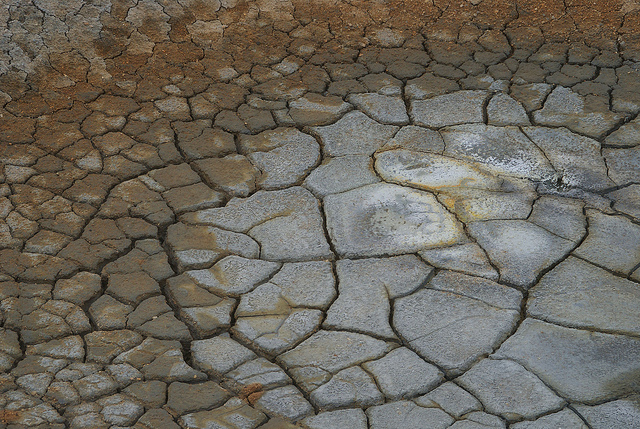Climate change is happening here and now, with significant damage to natural systems and society. The shrinking of the Arctic sea ice, the melting of the Greenland and Antarctica ice sheets, the acidification of the oceans, the sea level rise, the shifting patterns of precipitation, and the amplified threat of wildfires, are some of its well-recognized effects. There are also significant concerns related to the consequences that climate change could have on freshwater availability and agricultural productivity worldwide — resulting in increasing poverty and further weakening of fragile governments. Indeed, climate change has been identified as a “threat multiplier” — it can exacerbate political instability in the world’s most dangerous regions. “Droughts, floods, food and water shortages and extreme weather can uproot communities, cause humanitarian crises and increase the chances of armed conflict.”

Photo credit: Sander Hoogendoorn, CC BY 2.0
Results from a study carried out by researchers at Columbia University and the University of California Santa Barbara (published in the scientific journal Proceedings of the National Academy of Sciences on March 2, 2015) show that the Syrian conflict has been caused, at least in part, by a record drought. The drought occurred approximately from 2007 to 2010, and was worsened by global warming. The researchers wrote: “For Syria, a country marked by poor governance and unsustainable agricultural and environmental policies, the drought had a catalytic effect, contributing to political unrest.”
The Syrian uprising began in the Spring of 2011 and then escalated into an ongoing civil war, leading to one of the largest refugee exoduses in recent history — neighboring countries such as Lebanon, Jordan and Turkey are struggling to accommodate the displaced populations. According to the BBC, “Almost 200,000 Syrians have lost their lives in the escalating conflict between forces loyal to President Bashar al-Assad and those opposed to his rule. Syria’s bloody internal conflict has destroyed entire neighborhoods and forced more than nine million people from their homes.” In addition, the war has now acquired sectarian overtones.
In their published study, the researchers point out that the 2007−2010 record drought caused widespread crop failure and a mass migration of farming families to urban centers. In 8 years, the Syrian urban population rose by 50%. But what caused, precisely, the widespread crop failure? According to the researchers, unsustainable farming practices led to a massive depletion of groundwater while the region was experiencing a long-term decline in rainfall. At the same time, summer temperatures rose, drying out much of the remaining moisture in the soil. Colin Kelley, leading author of the study, wrote in The Conversation: “We found that there is very little evidence to suggest that long-term trends toward higher temperatures and dryness could be explained by natural climate variability. Instead, the trends are consistent with the effects of increasing greenhouse gasses, predominantly carbon dioxide, during this time.”
The researchers do acknowledge the study limitations. They said that, due to the many factors contributing to the escalating conflict — for example, inequality, corrupt leadership, and the influx of 1.5 million refugees from Iraq — it is impossible to identify the most important one.
For the past years, the link between climate change and conflict has stirred debate, now rekindled by the new study. Thomas Bernauer, a professor of political science at the Swiss Federal Institute of Technology in Zurich has been critical of some earlier studies and is equally critical of the new study. He wrote in an email to the New York Times: “The evidence for the claim that this drought contributed to the outbreak of civil war in Syria is very speculative and not backed up by robust scientific evidence.”
Francesca de Châtel at Radboud University in Nijmegen, the Netherlands, told The Guardian: “The uprising has more to do with the government’s failure to respond to the drought, and with broader feelings of discontent in rural areas, and the growing gap between rich and poor, and urban and rural areas during the 2000s, than with the drought itself.”
However, according to the Associated Press, Martin Hoerling, a National Oceanic and Atmospheric Administration meteorologist, praised the study as “quite compelling.” Hoerling, who dismissed the role of global warming in some U.S. droughts — including the current California drought — said that the study makes a strong case for the Syrian drought and the violence being connected to climate change.
In The Conversation, Kelley concluded that “Civil unrest can never have a simple or unique cause and the Syrian conflict, now civil war, is no exception. The recent drought was likely made worse by human-induced climate change and such persistent, deep droughts are projected to become more commonplace in a warming world.”
In the video below, Pulitzer Prize–winning journalist Thomas Friedman talks about the Syrian drought, and the potential for instability — in the Middle East and elsewhere — caused by climate change and lack of water.